 W
WDiphtheria is an infection caused by the bacterium Corynebacterium diphtheriae. Signs and symptoms may vary from mild to severe. They usually start two to five days after exposure. Symptoms often come on fairly gradually, beginning with a sore throat and fever. In severe cases, a grey or white patch develops in the throat. This can block the airway and create a barking cough as in croup. The neck may swell in part due to enlarged lymph nodes. A form of diphtheria which involves the skin, eyes or genitals also exists. Complications may include myocarditis, inflammation of nerves, kidney problems, and bleeding problems due to low levels of platelets. Myocarditis may result in an abnormal heart rate and inflammation of the nerves may result in paralysis.
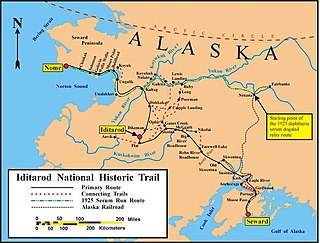 W
WThe 1925 serum run to Nome, also known as the Great Race of Mercy and The Serum Run, was a transport of diphtheria antitoxin by dog sled relay across the U.S. territory of Alaska by 20 mushers and about 150 sled dogs across 674 miles (1,085 km) in 5 ½ days, saving the small town of Nome and the surrounding communities from a developing epidemic.
 W
WBalto was a Siberian Husky and sled dog belonging to musher and breeder Gunnar Kaasen. He achieved fame when he led a team of sled dogs on the final leg of the 1925 serum run to Nome, in which diphtheria antitoxin was transported from Anchorage, Alaska, to Nenana, Alaska, by train and then to Nome by dog sled to combat an outbreak of the disease.
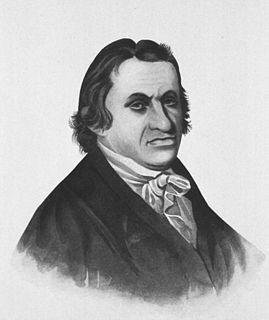 W
WSamuel Bard was an American physician who founded the first medical school in New York City and the second medical school in the United States at King's College, now known as Columbia University College of Physicians and Surgeons. He was a personal physician to George Washington. His description of the disease diphtheria was instrumental in formulating treatment for that condition.
 W
WEmil von Behring, born Emil Adolf Behring, was a German physiologist who received the 1901 Nobel Prize in Physiology or Medicine, the first one awarded in that field, for his discovery of a diphtheria antitoxin. He was widely known as a "saviour of children," as diphtheria used to be a major cause of child death. He was honored with Prussian nobility in 1901, henceforth being known by the surname "von Behring."
 W
WCorynebacterium diphtheriae is the pathogenic bacterium that causes diphtheria. It is also known as the Klebs-Löffler bacillus, because it was discovered in 1884 by German bacteriologists Edwin Klebs (1834–1912) and Friedrich Löffler (1852–1915).
 W
WThe DPT vaccine or DTP vaccine is a class of combination vaccines against three infectious diseases in humans: diphtheria, pertussis, and tetanus. The vaccine components include diphtheria and tetanus toxoids and either killed whole cells of the bacterium that causes pertussis or pertussis antigens. The whole cells or antigens will be depicted as either "DTwP" or "DTaP", where the lower-case "w" indicates whole-cell inactivated pertussis and the lower-case "a" indicates pertussis antigens.
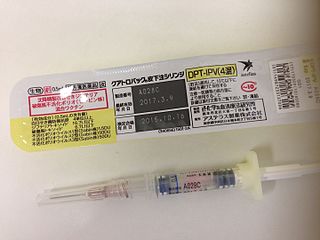 W
WDTaP-IPV vaccine is a combination vaccine whose full generic name is diphtheria and tetanus toxoids and acellular pertussis adsorbed and inactivated poliovirus vaccine (IPV). It is also known as DTaP/IPV, dTaP/IPV, DTPa-IPV, or DPT-IPV. It protects against the infectious diseases diphtheria, tetanus, pertussis, and poliomyelitis.
 W
WThe Iditarod Trail, also known historically as the Seward-to-Nome Trail, refers to a thousand-plus mile (1,600 km) historic and contemporary trail system in the US state of Alaska. The trail began as a composite of trails established by Alaskan native peoples. Its route crossed several mountain ranges and valleys and passed through numerous historical settlements en route from Seward to Nome. The discovery of gold around Nome brought thousands of people over this route beginning in 1910. Roadhouses for people and dog barns sprang up every 20 or so miles. By 1918 World War I and the lack of 'gold fever' resulted in far less travel. The trail might have been forgotten except for the 1925 diphtheria outbreak in Nome. In one of the final great feats of dog sleds, twenty drivers and teams carried the life-saving serum 674 miles (1,085 km) in 127 hours. Today, the Iditarod Trail Sled Dog Race serves to commemorate the part the trail and its dog sleds played in the development of Alaska.
 W
W"Jim" was the name of a former milk wagon horse, who was used to produce serum containing diphtheria antitoxin. Jim produced over 30 US quarts of diphtheria antitoxin in his career. However, on October 2, 1901, Jim showed signs that he had contracted tetanus and was euthanized. After the death of a girl in St. Louis was traced back to Jim's contaminated serum, it was discovered that serum dated September 30 contained tetanus in its incubation phase. This contamination could have easily been discovered if the serum had been tested prior to its use. Furthermore, samples from September 30 had also been used to fill bottles labeled "August 24," while actual samples from the 24th were shown to be free of contamination.
 W
WGunnar Kaasen was a Norwegian-born musher who delivered a cylinder containing 300,000 units of diphtheria antitoxin to Nome, Alaska, in 1925, as the last leg of a dog sled relay that saved the U.S. city from an epidemic.
 W
WArnold C. Klebs was a physician who specialized in the study of tuberculosis. Born in Bern, Switzerland, Arnold Klebs, the son of renowned bacteriologist Edwin Klebs, was raised in the presence of an extensive array of scientists, artists, and historians.
 W
WTheodor Albrecht Edwin Klebs was a German-Swiss microbiologist. He is mainly known for his work on infectious diseases. His works paved the way for the beginning of modern bacteriology, and inspired Louis Pasteur and Robert Koch. He was the first to identify a bacterium that causes diphtheria, which was called Klebs–Loeffler bacterium. He was the father of physician Arnold Klebs.
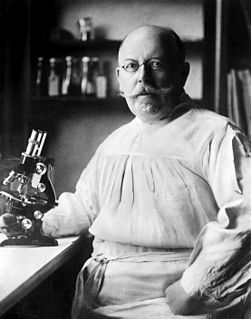 W
WFriedrich August Johannes Loeffler was a German bacteriologist at the University of Greifswald.
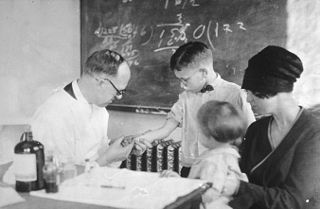 W
WThe Schick test, developed in 1913, is a skin test used to determine whether or not a person is susceptible to diphtheria. It was named after its inventor, Béla Schick (1877–1967), a Hungarian-born American pediatrician.
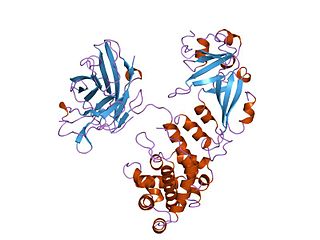 W
WDiphtheria toxin is an exotoxin secreted by Corynebacterium, the pathogenic bacterium that causes diphtheria. The toxin gene is encoded by a prophage. The toxin causes the disease in humans by gaining entry into the cell cytoplasm and inhibiting protein synthesis.
 W
WDiphtheria vaccine is a vaccine against Corynebacterium diphtheriae, the bacterium that causes diphtheria. Its use has resulted in a more than 90% decrease in number of cases globally between 1980 and 2000. The first dose is recommended at six weeks of age with two additional doses four weeks apart, after which it is about 95% effective during childhood. Three further doses are recommended during childhood. It is unclear if further doses later in life are needed.